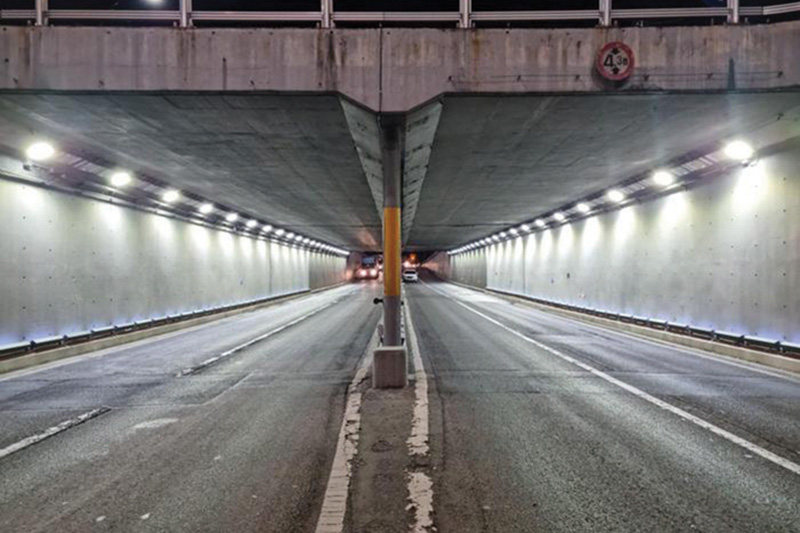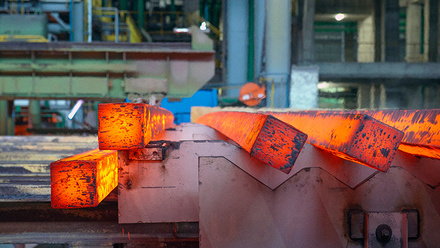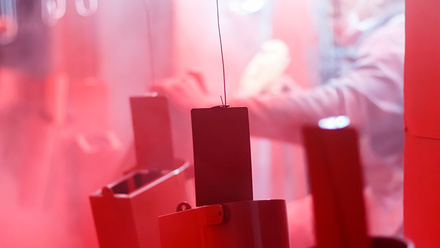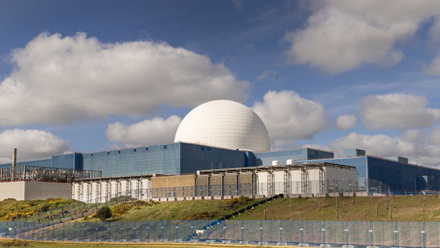Photocatalytic concrete to reduce traffic pollution in tunnels
A photocatalytic concrete that removes fine particulate matter from road tunnels has been trialled in Seoul, South Korea.

Air quality tends to be worse in underground road tunnels than other road environments due to poor air circulation.
Photocatalysts are semiconductors that break down pollutants when exposed to light to produce reactive oxygen species with strong oxidising power, converting the precursors of fine particulate matter nitrogen oxides (NOx), sulphur dioxide, etc, into harmless substances.
The results in KSCE Journal of Civil and Environmental Engineering Research detail three different methods of adding titanium dioxide (TiO₂) to the concrete – mechanically mixing during casting, pretreating bottom ash aggregate with TiO₂ before mixing in, and spraying as a solution to the normally fabricated porous concrete. The team at the Korea Institute of Civil Engineering and Building Technology (KICT), South Korea, reports that the first and second method decreases the concrete’s compressive strength as the TiO₂ increases in proportion, while spraying seems to enhance it.
To reduce costs, the photocatalyst is derived from a titanium salt sludge. It has a particle size less than or equal to 10μm, a 70m²/g surface area and a 70% purity level.
The team notes that by increasing the photocatalyst inclusion rate to 5%, 10% and 15% in lab-scale tests, the reduction rate of NOx was 6%, 17% and 20%, respectively. However, wind and air currents are influential in real-world scenarios.
The NOx removal is highest for the sprayed samples, followed by pretreated bottom ash aggregate and mechanically mixed material. NOx concentration levels reduced by ~18% in 24 hours in a trial on a 40m section of the Banpo Underground Road Tunnel inner wall in Seoul.
The by-products are then converted into salts due to calcium in the concrete and are naturally washed away by rain.
Meanwhile, the artificial light underground enables the reaction to continue in areas without natural light. Dr Hanim Kim of KICT notes that the photocatalytic activity using UV may not be as effective as when using solar energy but that it is sufficient to remove harmful airborne substances.
As the photocatalyst is not consumed by the reactions, then as long as there is no surface contamination or wear it can be used continuously, explains Kim. 'Additionally, through experimental confirmation, it has been observed that surface cleaning (simple washing with water) helps maintain the photocatalyst’s activity by preventing surface contamination.'
The group is currently running a trial with the authorities in the Gyeonggi-do Province to further demonstrate the effectiveness of photocatalytic construction technologies and see if it will need maintenance.
The pilot project involves applying the material to the underground tunnels in Gwangmyeong city, on a 130m-long section of the Cheolsan Underground tunnel.
Kim adds, 'It has been confirmed that photocatalytic concrete is effective in removing various airborne pollutants found near roadways, including sulphur dioxide, volatile organic compounds and ammonia, in addition to NOx.'
But acknowledges there is a balancing act to be maintained. 'A high proportion of photocatalyst mixing can have an impact on the mechanical properties of concrete.'
The Green Construction by Photocatalyst Research Group at KICT has been developing technologies for the mass production of photocatalysts from wastewater sludge since 2018, with the help of the South Korean Government.







